Photos: Fruits of the Sonoran Desert
Sun, sun, everywhere
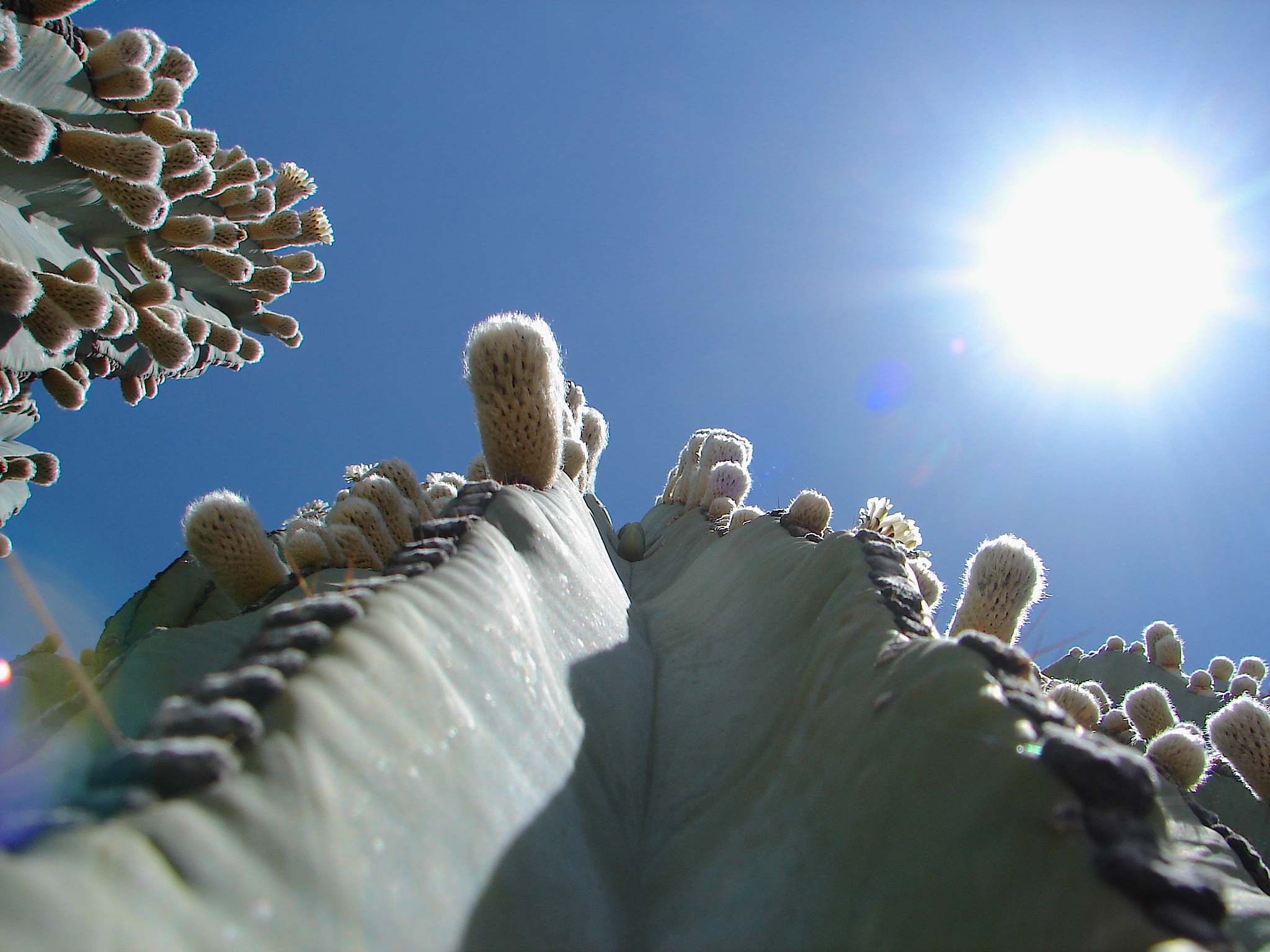
During the month of June, the Sonoran Desert of northern Mexico and the southwestern United States is best known for its extreme heat and lack of rainfall. Arizona set the record for the highest known temperature in the month of June when Lake Havasu City's thermometer rose to 128 degrees Fahrenheit (53 degrees Celsius) on June 29, 1994.
The average high temperature across the Sonoran Desert is 105 degrees F (41 degrees C) and its average low temperature is 73 degrees F (23 degrees C). The average June precipitation is zilch — basically 0.00 inches (0.00 centimeters).
The most predominate feature of the Sonoran Desert during the month of June is, without doubt, intense sunlight!
Thriving in the desert
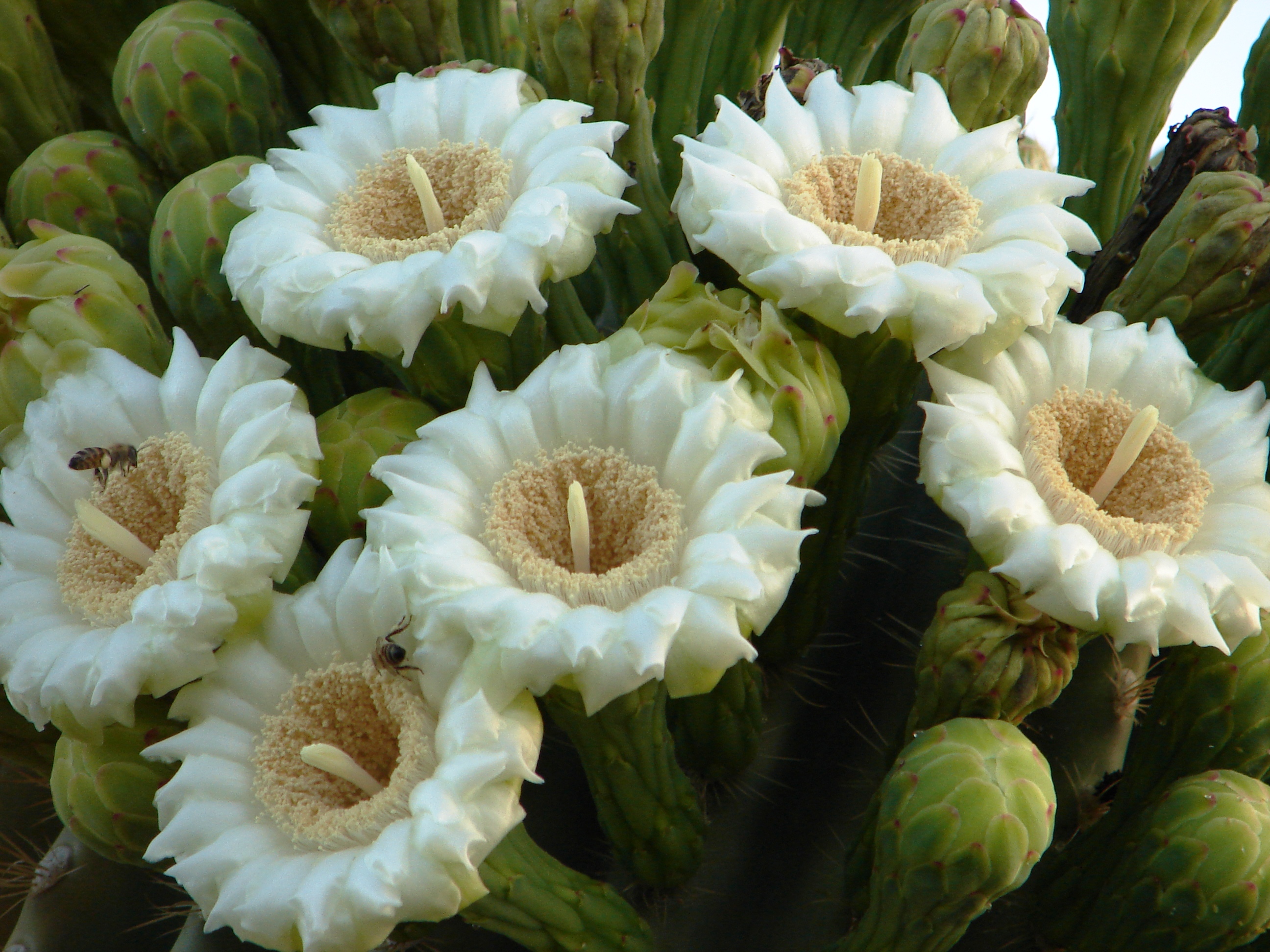
But in the Sonoran Desert, nature has placed a couple of giant, arborescent cacti, which grow and thrive in this region of extreme drought and heat. They are the saguaro cactus (Carnegiea gigantea), most commonly found in central and southern Arizona, and the cardon cactus (Pachycereus pringlei), found in the Mexican states of Sonora and Baja California.
Just before the extreme temperatures of June — during the months of April and May — these two sentinels of the Sonoran Desert bath the desert in floral beauty with an explosion of millions of cream-colored flowers, like the saguaro blooms shown here.
Quick turn-around
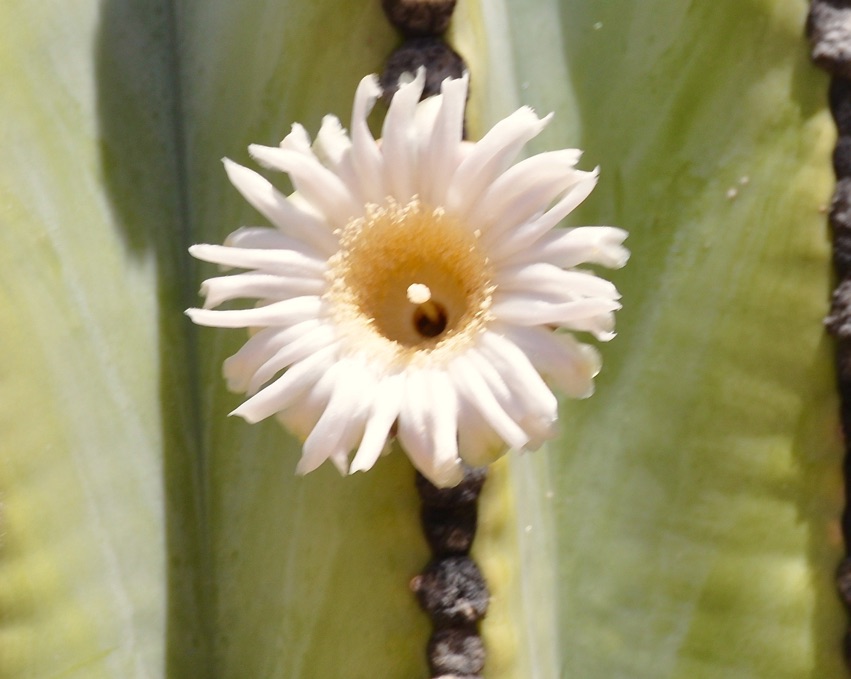
These spectacular blooms of the saguaro and the cardon, shown here, only remain open for 24 hours. In that short window of time, these flowers must be pollinated by a variety of insects, birds or two species of bats — the lesser long-nosed bat, Leptonycteris curasoae yerbabuenae, and the Mexican long-tongued bat, Choeronycteris mexicana.
The pollination of saguaro and cardon flowers is crucial not only for the two cacti but for the entire ecological system of the Sonoran Desert.
A transformation
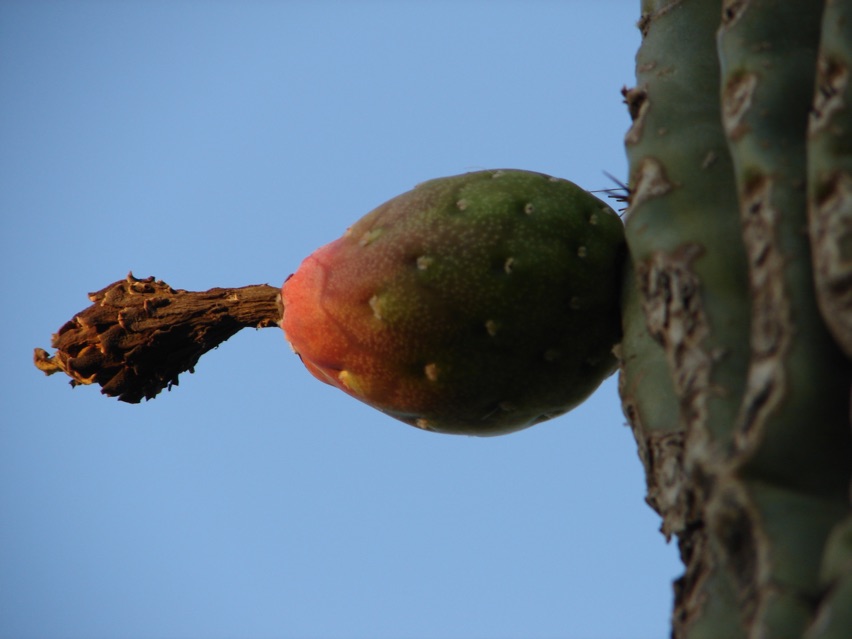
Some four to six weeks after pollination, in the early weeks of June, the beautiful cream flowers of these two columnar cacti have totally changed appearance. The waxy petals have hardened into a dark brown stalk and the ovary of the flowers has swollen into a ripened fruit. At the time in the desert year, when the grasses and annual vegetation have all dried up due to lack of rain and intense heat, the reddening of this saguaro fruit indicates that a feast of plenty is about to burst upon the Sonoran Desert scene.
Time to feast
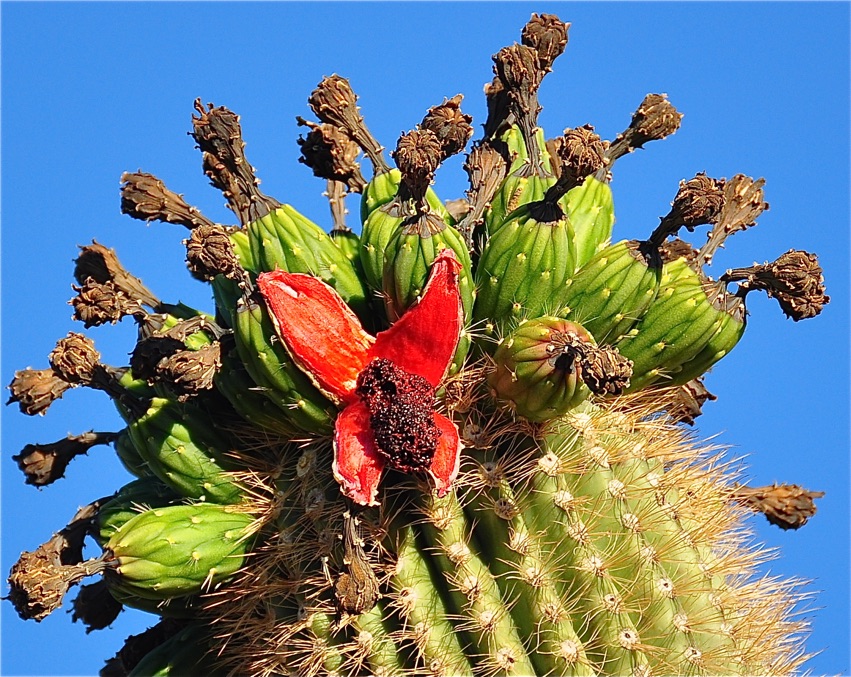
The splitting of the fruit begins slowly, usually in early morning. But suddenly, across the June landscape that's almost void of edible vegetation, the animals of the Sonoran Desert are offered a banquet of fleshy pulp and millions and millions of life sustaining seeds.
Fruit buffet
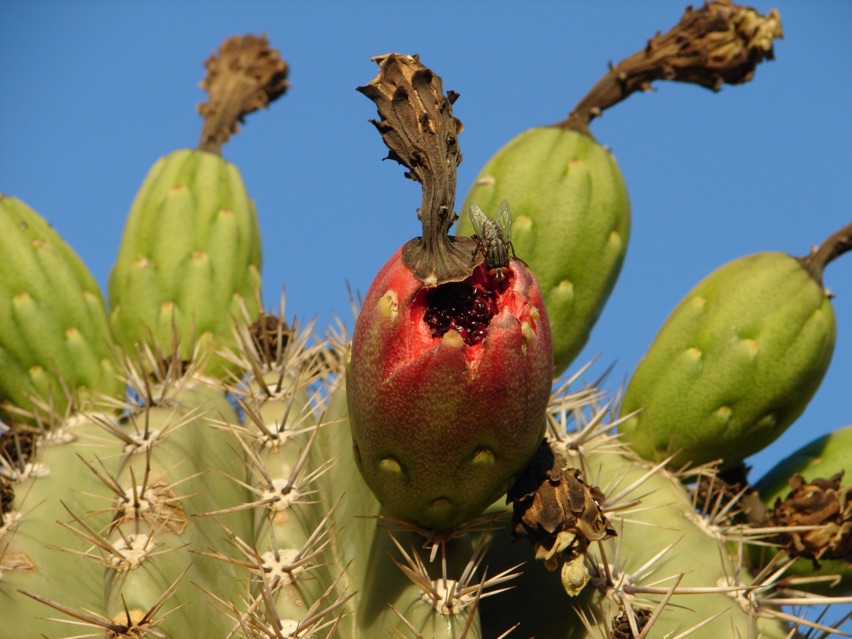
Many animals enjoy the feast offered by the fruits of the saguaro and cardon. For those that can fly, like this common house fly, Musca domestica, the newly opened fruit provides a quick and much needed source of moisture.
Life-saving cacti
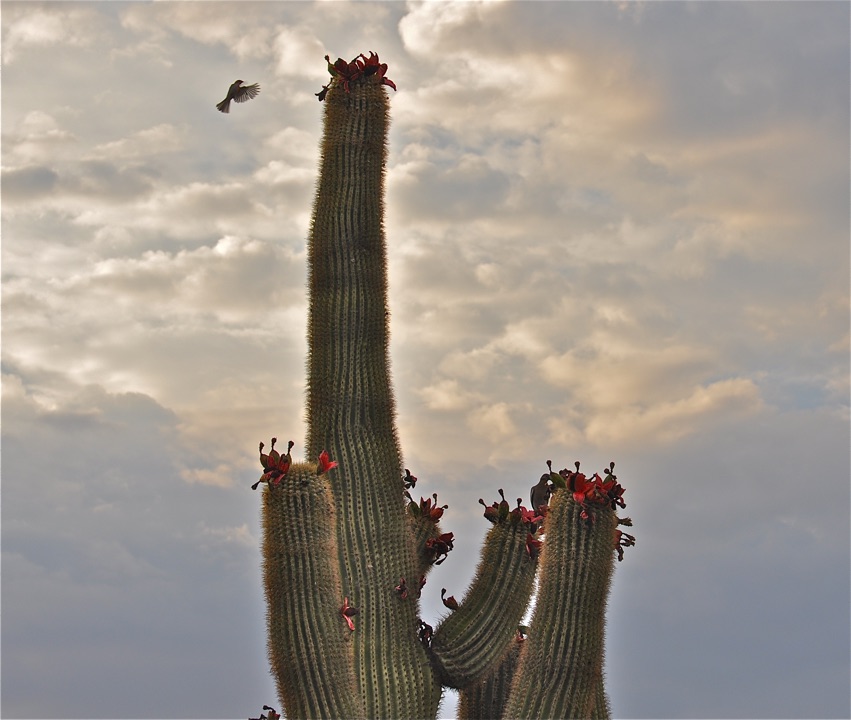
Birds of all varieties flock to the great cacti to dine on the plants' life-sustaining offerings. Since the saguaro and cardon flowers bloom over a six-week period, their fruits become ripe and open over that similar six-week period from early June to mid-July. In the driest period of the Sonoran Desert year, the two great giant cacti species provide food and moisture to the desert animals that share this extreme climate.
Sign up for the Live Science daily newsletter now
Get the world’s most fascinating discoveries delivered straight to your inbox.
To share or not to share
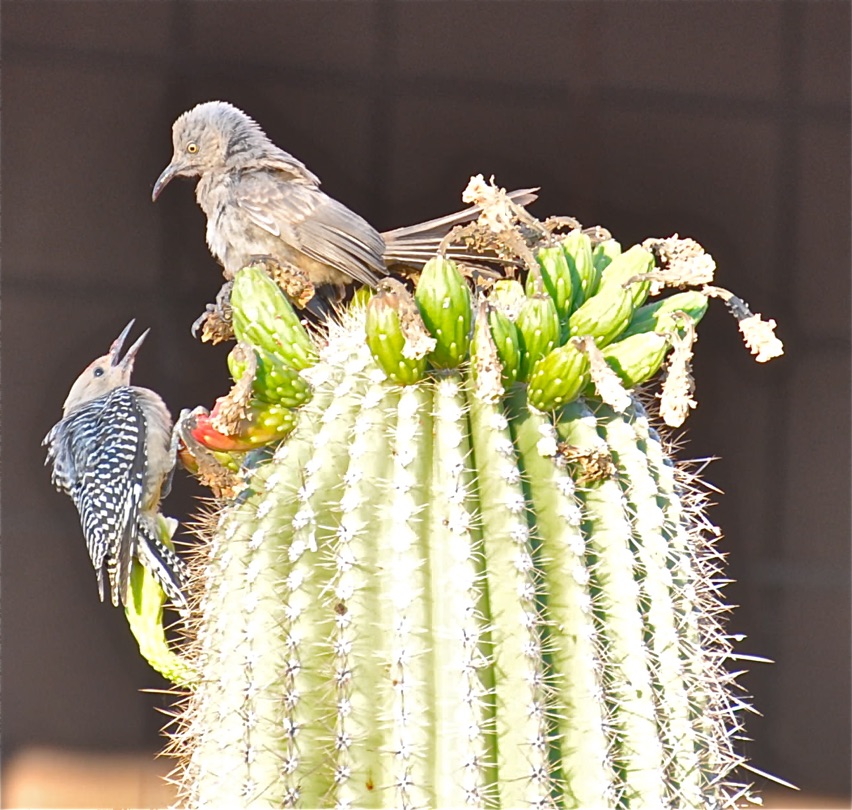
The cacti fruit provide plenty of food for all to share, but sometimes "all" do not understand that abundance. As shown here, a curve-billed thrasher, Toxostoma curvirostre, and a gila woodpecker, Melanerpes uropygialis, have an early morning disagreement as to just who will get breakfast from the one saguaro fruit that has ripened.
Tiny yet important

The saguaro and cardon cacti seeds — shown here on the right and left, respectively — are quite small for such large plant species. Each seed is about the size of a pin-head. Each of the hundreds of thousands of fruits that ripen during the hot and dry time of year is estimated to contain some 2,000 small black seeds.
Guardians of Life
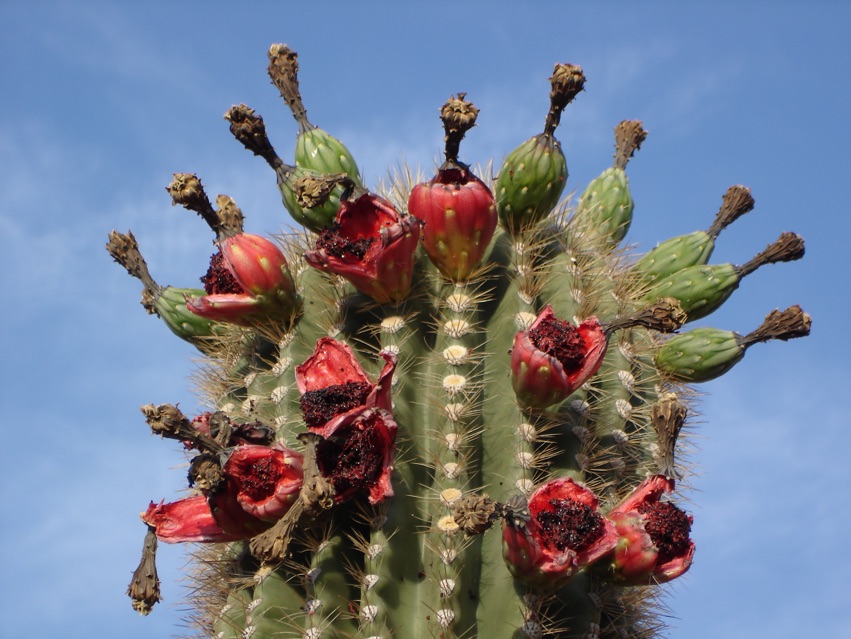
For six weeks, the fruits of the saguaro and cardon cacti provide food and moisture to the animals of the Sonoran Desert. Once open, the fruits easily detach from the cacti arms and fall to the ground, where they are dined upon by rabbit, javelina, deer, tortoises, coyotes, ants, beetles and other animals . Since all other annual vegetation has dried up from the extreme heat and drought, these cacti fruits literally become life savers.
Odds against survival
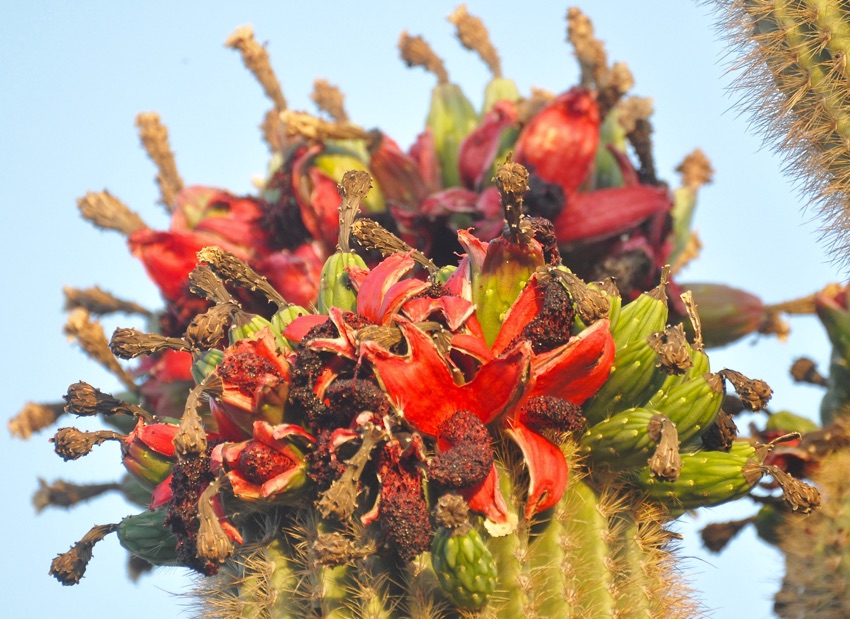
During the lifetime of one of these giant cactus, their flowers will produce an estimated 40 million seeds, of which only one seed will find the right climatic conditions as well as good fortune to grow back into a mature, flower-producing plant. Life in the Sonoran Desert is not easy, and only the most hardy and adaptable plants and animals survive.










